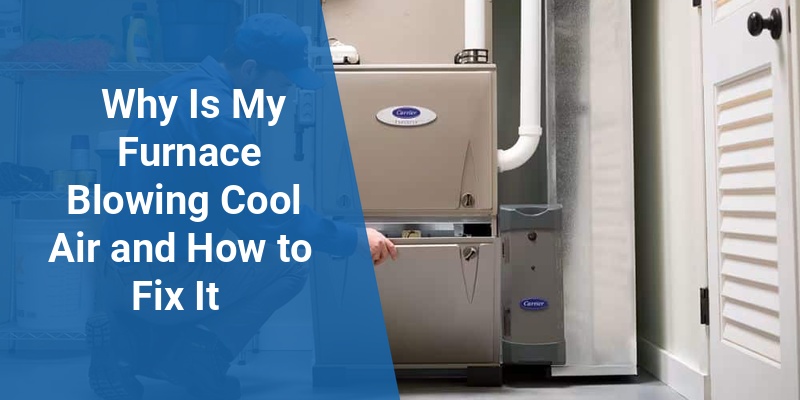When a furnace starts blowing cool air instead of warm air, it can be frustrating and concerning, especially during cold weather. This issue often points to underlying problems affecting your heating system’s performance. Understanding the common causes and solutions can help homeowners quickly restore warmth and maintain comfort. This article explores the main reasons why a furnace might blow cold air, troubleshooting tips, and effective repairs to get your heating system working efficiently again.
| Common Causes | Symptoms | Possible Solutions |
|---|---|---|
| Thermostat Settings | Cool air despite calling for heat | Adjust or replace thermostat |
| Dirty Air Filter | Reduced airflow, occasional cold air | Replace or clean air filter |
| Ignition Problems | Furnace cycles on but no heat | Inspect or repair ignition system |
| Pilot Light Out | No heat, cool air blowing | Relight pilot light or professional service |
| Limit Switch Malfunction | Furnace shuts off prematurely | Replace limit switch |
| Blocked or Closed Vents | Uneven heating, cold airflow | Open or clean vents and ducts |
Common Causes of a Furnace Blowing Cool Air
Thermostat Settings or Malfunction
The thermostat controls when your furnace turns on and what temperature it maintains. If your thermostat is set incorrectly, set to “Fan On” instead of “Auto,” or defective, the furnace may blow cool air continuously. Check your thermostat settings first. Replace batteries if needed or recalibrate the thermostat. In some cases, an outdated or faulty thermostat may need replacement to restore proper heating control.
Dirty or Clogged Air Filter
A dirty air filter restricts airflow, causing the furnace heat exchanger to overheat and shut off as a safety measure. This results in the blower fan running but only cool air being circulated. Air filters should be checked monthly during winter and replaced every 1-3 months. Maintaining clean filters not only improves heating efficiency but also enhances indoor air quality.
Ignition System Problems
Modern furnaces rely on electronic ignition or a pilot light to start the heating process. If the ignition system fails, the burners will not light, causing the furnace fan to blow cool air. Common issues include faulty ignitors, electrodes, or control boards. Diagnosing ignition failures typically requires a professional HVAC technician, as improper handling can be dangerous.
Pilot Light Extinguished
Older furnaces use a pilot light to ignite the gas burners. If the pilot light goes out, the furnace burners won’t light, and only cool air will circulate. Reasons include drafts, dirt in the pilot tube, or gas supply problems. Relighting a pilot light can be a simple fix, but persistent issues should be addressed by a professional to ensure safe operation.
Limit Switch Malfunction
The limit switch is a safety device that turns off the burners if the furnace overheats. If this switch malfunctions or is faulty, it may prematurely shut off the burners while leaving the blower fan running, resulting in cool air blowing through the vents. Replacing a faulty limit switch can restore proper furnace operation.
Blocked or Closed Air Vents and Ducts
Obstructions or closed vents in your home’s ductwork limit airflow and create pressure imbalances, causing some rooms to feel cold despite the furnace running. Checking and clearing vents and ducts ensures warm air reaches every room efficiently. Regular duct cleaning and inspection help prevent airflow problems that cause cool air circulation.
Call 888-906-9139 for Free Local HVAC Quotes – No Obligation, Just Savings!
How to Troubleshoot a Furnace Blowing Cool Air
Check the Thermostat First
Ensure your thermostat is set to “Heat” mode and the temperature is set higher than the current room temperature. Inspect batteries and wiring connections if the thermostat does not respond appropriately.
Inspect and Replace the Air Filter
Locate the furnace filter and visually inspect for dirt buildup. Replace it if it appears clogged. This is one of the simplest fixes to improve furnace performance.
Examine the Pilot Light and Ignition System
For furnaces with pilot lights, verify that it is lit. Refer to your furnace manual to safely relight the pilot. For electronic ignition systems, listen or observe if ignitors spark during startup; lack of ignition often requires professional repair.
Evaluate the Limit Switch
If the furnace cycles on but cool air blows shortly after, a faulty limit switch might be the culprit. A technician can test and replace this component if necessary.
Inspect Air Vents and Ducts
Ensure all air vents are open and unobstructed. Look for visible blockages or damage in ductwork, especially if rooms are unevenly heated.
Preventive Maintenance to Avoid Furnace Cooling Issues
- Regular Air Filter Replacement: Change filters according to manufacturer recommendations to maintain air quality and system efficiency.
- Annual Professional Furnace Inspection: HVAC professionals can check critical components like ignition systems and limit switches.
- Keep Vents and Returns Clear: Avoid blocking vents with furniture or curtains and keep ducts clean.
- Maintain Thermostat Functionality: Upgrade to programmable or smart thermostats for better temperature control and energy savings.
- Check for Gas Supply Issues: If heating problems persist, inspect natural gas or propane supply lines for leaks or blockages handled by certified technicians.
When to Call a Professional HVAC Technician
While some furnace issues can be resolved by homeowners, certain problems require specialized tools and expertise. Call a licensed HVAC technician if your furnace:
- Does not ignite after pilot light relighting attempts.
- Shows signs of gas leaks such as odor or corrosion.
- Cycles on and off irregularly or shuts down unexpectedly.
- Has a faulty limit switch or complex electrical components.
- Poses any safety concerns during operation.
Professional maintenance ensures your furnace runs safely, efficiently, and reliably through winter months.
Call 888-906-9139 for Free Local HVAC Quotes – No Obligation, Just Savings!
